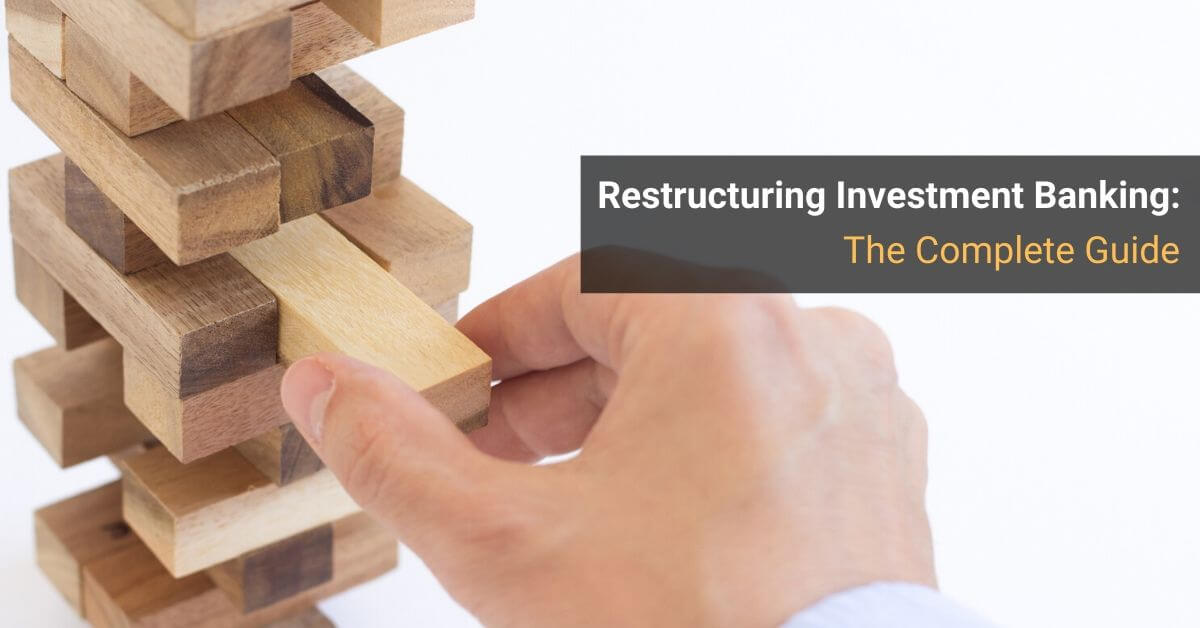Home>Finance>Restructuring: Definition, Meaning, Process, And Example


Finance
Restructuring: Definition, Meaning, Process, And Example
Published: January 19, 2024
Learn all about financial restructuring, including its definition, meaning, process, and real-life examples. Explore the world of finance now!
(Many of the links in this article redirect to a specific reviewed product. Your purchase of these products through affiliate links helps to generate commission for LiveWell, at no extra cost. Learn more)
Restructuring: Definition, Meaning, Process, and Example
Welcome to our Finance category, where we dive deep into various topics related to managing your money and making informed financial decisions. In this blog post, we will explore the concept of restructuring in detail. Have you ever wondered what restructuring is and how it can impact your financial future? Well, you’re in the right place! Today, we’re going to define what restructuring means, discuss its significance, and walk you through the process with a real-life example. So, let’s get started!
Key Takeaways:
- Restructuring involves making significant changes to the organizational or financial structure of a company.
- It is often done to enhance efficiency, reduce costs, address financial distress, or adapt to changes in the business environment.
What is Restructuring?
Restructuring, in the context of finance and business, refers to the process of making substantial changes to the organizational and financial structure of a company. It involves modifying various aspects of a business, such as its operations, management, debt, assets, or ownership, to achieve specific objectives. These objectives typically include enhancing operational efficiency, optimizing resource allocation, reducing costs, addressing financial distress, or adapting to changes in the industry or market conditions.
Restructuring can take different forms depending on the specific needs of the company. It might involve downsizing or expanding operations, selling off non-core assets, acquiring new businesses, merging with or acquiring another company, or even changing the company’s legal structure. The goal is to improve the company’s overall performance and position it for long-term success.
The Restructuring Process
The restructuring process can be complex and challenging, requiring careful planning, analysis, and implementation. Here is a step-by-step overview of the typical restructuring process:
- Assessment: The first step involves conducting a comprehensive assessment of the company’s current situation, including its financial health, operations, and market position. This assessment helps identify the specific areas that require restructuring.
- Developing a Plan: Once the areas for restructuring are identified, a detailed plan is developed. This plan outlines the specific changes, goals, and strategies to be implemented to achieve the desired outcomes.
- Implementation and Execution: With the plan in place, it’s time to put it into action. This phase involves implementing the proposed changes, whether it’s reorganizing departments, reducing workforce, renegotiating debt, or any other necessary steps.
- Monitoring and Evaluation: After the restructuring measures have been implemented, it’s important to monitor their effectiveness and evaluate their impact on the company’s performance. This helps identify any further adjustments, if needed, to ensure the desired outcomes are achieved.
An Example of Restructuring
To illustrate the concept of restructuring, let’s consider a hypothetical example. Imagine a manufacturing company that has been experiencing financial difficulties due to increased competition and outdated technology. To address these challenges, the company decides to undergo a restructuring process. Here’s how it could unfold:
- The company conducts a thorough assessment and identifies outdated machinery, inefficient production processes, and excessive employee overhead as key areas for restructuring.
- A detailed plan is developed, which includes investing in new technology, streamlining production processes, and reducing the workforce through voluntary redundancies.
- The plan is then put into action. The company purchases new machinery, implements efficient production techniques, and offers voluntary redundancy packages to employees to reduce labor costs.
- Over time, the company monitors the impact of these changes and evaluates their effectiveness. As a result of the restructuring, the company experiences improved operational efficiency, reduced costs, and increased competitiveness in the market.
While this example simplifies the complexity of a real-life restructuring process, it highlights the potential benefits that can be achieved through strategic restructuring.
In Conclusion
Restructuring is a vital process that companies undertake to adapt, optimize, and improve their overall performance. By reorganizing and making necessary changes to their structure, companies can enhance efficiency, reduce costs, and better position themselves for the future. Understanding the definition, meaning, and process of restructuring can empower individuals and businesses to make informed decisions and navigate financial challenges successfully.
We hope this blog post has enlightened you about the world of restructuring, its significance, and how it can impact businesses. Stay tuned for more informative content in our Finance category!














